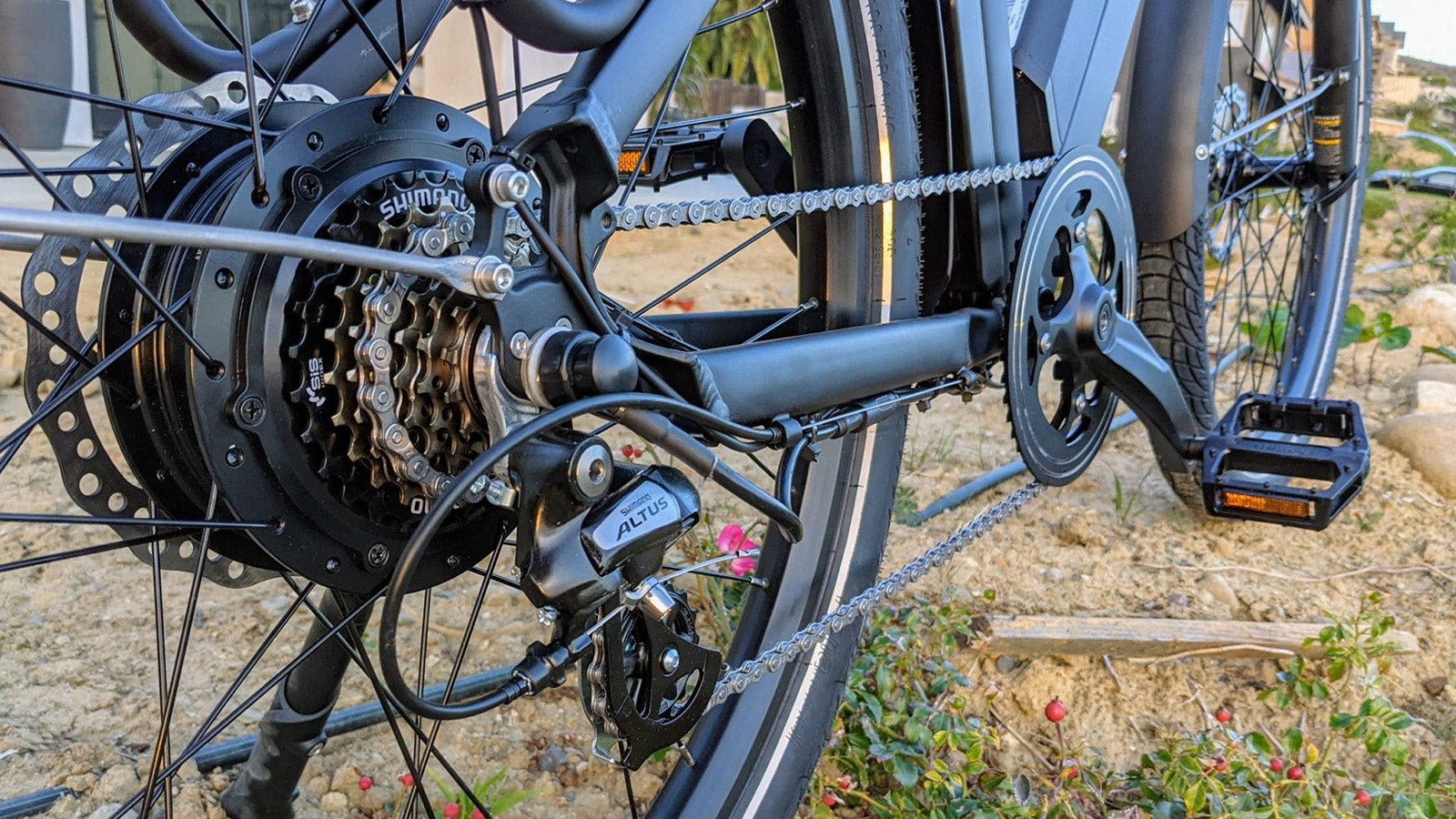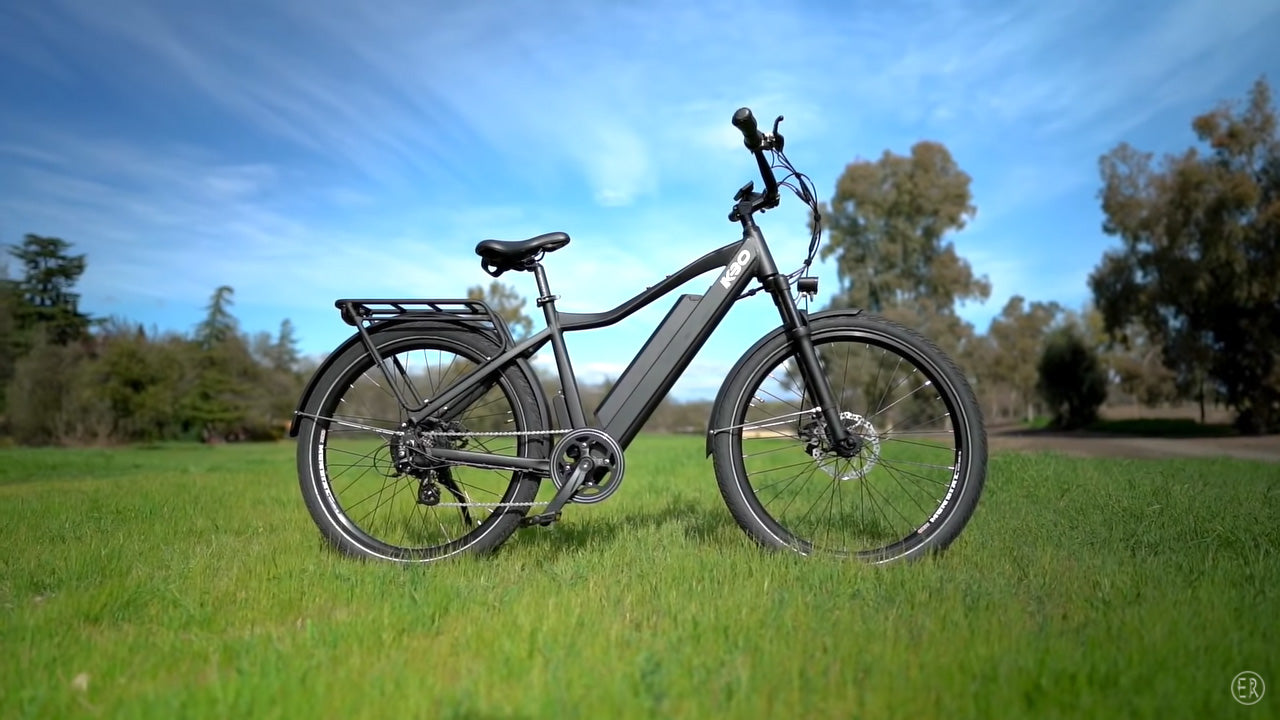Electric Bike Gear: Shifting Explained for Beginners | KBO Bike
Last week, we talked about the different types of motors used in e-bikes and tips on how to keep your electric bikes secure. Today, we will learn more about electric bicycle gears.
Many times, you see riders spinning their pedals laboriously, barely moving their ebikes. Riding would be a lot easier if these riders learn to use their bike gears properly. Shifting gears is a fundamental mechanical function of your electric bicycle, along with using your brake.
Learning how to use cycle gear may seem basic. However, gearing and shifting can be a daunting task. Proper shifting will improve your speed and make you more comfortable throughout your ride. This ultimate guide will take you through bike gears and how to shift gears on an electric bicycle.

Ultimate Guide to Different Types of Bike Gears
Before you learn how to use electric bike gears, it is essential to know the various gears you can find on bikes. These include:
Hub gears
This is one of the robust gears used in bikes. It is a low-maintenance gear system that is housed in a big rear hub. There are various speed options available on the hub gears ranging from 4 up to 14 gears. For example, the KBO Breeze Commuter ebike comes with a Shimano 7-speed bike gear shifter.
Standard double
This gear comes with two chainrings at its front with up to eleven progression sprocket variants in the rear. A standard double gear system is one of the best choices for racing. It offers the largest sizes a chainring can have for the biggest gears. That way, it keeps you pedaling smoothly, even at higher speeds. A standard double may not be the best choice if you’re looking for low gears.
Triple
Triple means you have three chainrings. This allows you to add a smaller gear option. The third chainring for this cycling gear is often about 30t or smaller. When paired with a larger ratio rear cassette, the chainring provides a very low gear. This enables you to pedal efficiently on steeper climbs.
If you’re looking for a ‘bail-out’ choice, then you should go for the triple gear. Also, it is the best choice if you ride regularly in hilly areas.
Compact
A compact gear is basically a smaller double gear setup. The two chainrings in this gear have smaller sizes. Their smaller sizes help to reduce the gear ratios across the range. The compact gear is presently one of the popular choices in several bicycles.
The reason for this is not far-fetched. The compact cycle gear reduces gearing at the lower end, which is enough for riders to tackle challenging climbs. Despite reducing lower-end gearing, it still keeps the top gear descent, enabling fast descending.
SRAM Apex
SRAM based its Apex gear around a double chainset which is compact and uses a specially made rear derailleur. It is one of the first gears designed for super-compact gearing. In addition, its large ratio cassette helps to reduce gearing significantly.
This advantage helps the Apex gear to offer low-bottom gear. The bottom gear can be lower than that of the Triple gear. However, it also comes with a top gear more enormous than the Triple. If you have the SRAM Apex, there is no need for the Triple.
How Do Bike Gears Work?
Most beginners tend to underuse their bike gears. They plug away in high cycle gear and expend lots of energy. Many beginners also churn the pedals at low speeds, while others pedal furiously without getting far.
The magic of how to use your cycle gear efficiently is to find the right cycle gear. With the right gear, you can pedal your speed bike at a steady rate or cadence without pushing it too gently or too hard.
What bike gear should you use?
Regardless of the combination of front and rear gear you use, your ebike will work. However, choosing the right combinations ensures smoother rides and an enjoyable experience. Using the following combinations will ensure smoother gear changes.
Regardless of the combination of front and rear gear you use, your ebike will work. However, choosing the right combinations ensures smoother rides and an enjoyable experience. Using the following combinations will ensure smoother gear changes.
Low gear – This is an excellent gear for climbing. As you approach a hill, switching down to this gear will help you climb steadily with lesser effort
- Front gear = Small chainring
- Rear gear = Largest bike sprocket
Middle gear – This is perfect for your everyday cruising along flat or undulating terrains. It offers you decent resistance, not too much or too little. For roads that may go up and down, flicking between the rear gears will do the trick.
- Front gear = Small chainring on compact/standard double; middle chainring on Triple
- Rear gear = Middle ebike sprocket
High gear – The high gear setup is excellent for accelerating, descending, and use on flat roads. High gear allows you to travel a long way.
- Front gear = Big chainring
- Back gear = Smallest bike sprocket
Finding Your Best Gear When Cycling
One great way of understanding your cadence and getting the right cycle gear is to get an excellent, less-busy road to practice your riding using different rhythms. One revolution involves you counting one foot making a complete revolution. Your best bet would be to count the foot at the pedal stroke’s bottom.

If you practice on a rolling or flat terrain, a cadence between 80-90 pedal revolutions per minute is a good number to have. It would also be advisable for you to cycle with various cadences. You must be able to work out the most natural shifting for you.
The same rule goes for climbing. Generally, having a cadence between 60-80 pedal revolutions per minute is optimum. You should practice on a quiet hill and try different rhythms. The one that gets you up the hill at low energy is your best bet.
How to Shift Gears on an Electric Bike
Depending on your e-bike of choice, you may have different kinds of shifters. Electric bicycles with drop handlebars often have their shifters as the same levers used to apply brakes. For such shifters, you push the lever to the side until you hear a clicking sound.

Mountain and hybrid ebikes with flat bars require you to shift their gears by using set paddles operated with the thumb. Some of these ebikes use ‘grip shifters’ or dial located inside of where your hands are placed. In this case, rotate the dial forth and back to change gears.
When you click through your gears, the cable connected to your shifters tightens and loosens. This applies some force on the derailleur moving the chain on the chainrings or cassette. The following describes what each lever on your ebike does:
- Left hand – It moves the chain up and down the chainring to control the front gears or derailleur.
- Right hand – It moves the chain up and down the cassette to control the rear gears or derailleur.
- Big lever – The larger shifter lever moves the chain into larger chainrings. So, use your right hand to shift into the larger rings for easier pedaling. Using your left hand, in this case, will make pedaling harder.
Small lever – The smaller shifter lever moves the chain into smaller chainrings. Here, it would be best if you used your left hand to shift into smaller gears for more effortless pedaling. Shifting gears with your right hand makes it more challenging.
Tips for Effective Gear Shifting
If you’re still wondering how to shift your cycle gear properly, the following tips will help:
-
Anticipate the terrain.
Don’t wait till you are halfway up a hill before shifting right. That way, you will need to apply maximum pressure on your ebike pedals. When on a slope, ensure that you shift one gear at a go. Momentarily relax stresses on pedals as you shift. If there is too much grinding, then you may be applying too much pressure. You can shift through different gears at a time on downhill or flat terrains.
-
Use easier gears when in doubt.
Although you may find hard-to-pedal gears feeling faster, they sap your strength and may be dangerous to your knees. Use an easier gear and pedal at a higher cadence. This is usually more efficient. Also, you should maintain a pedaling speed that you can sustain for an extended period of the ride.
-
Don’t shift too quickly.
It is always tempting to shift at a higher gear when accelerating on the flat or down a hill. This may disconnect your electric bike chain from the gears. Instead, ensure a gradual shift and engage the chain with a new gear before switching to the next one. Understand your ebike’s gear system because different setups respond differently.
-
Use a shifter at a time.
For conventional ebikes, you want to simplify your gear shifting. Therefore, you should not use both front and rear shifters simultaneously. For significant changes, remember to shift your electric bike chain between front chainrings. Then, fine-tune your gear settings by using the rear cogs.
-
Remember, practice makes perfect.
As with anything you do, practice, practice, and more practice. Spend some time practicing what you learned in this guide. Get used to changing gears and ride on different terrains. Make sure to use free, quiet roads for your practice until you are comfortable with shifting gears.
Conclusion
Shifting gears on your bike can be pretty tricky. However, you will get the hang of it the more you practice. Soon enough, shifting ebike gears will become easier for you. Then, you can go ahead and explore the world.

















































